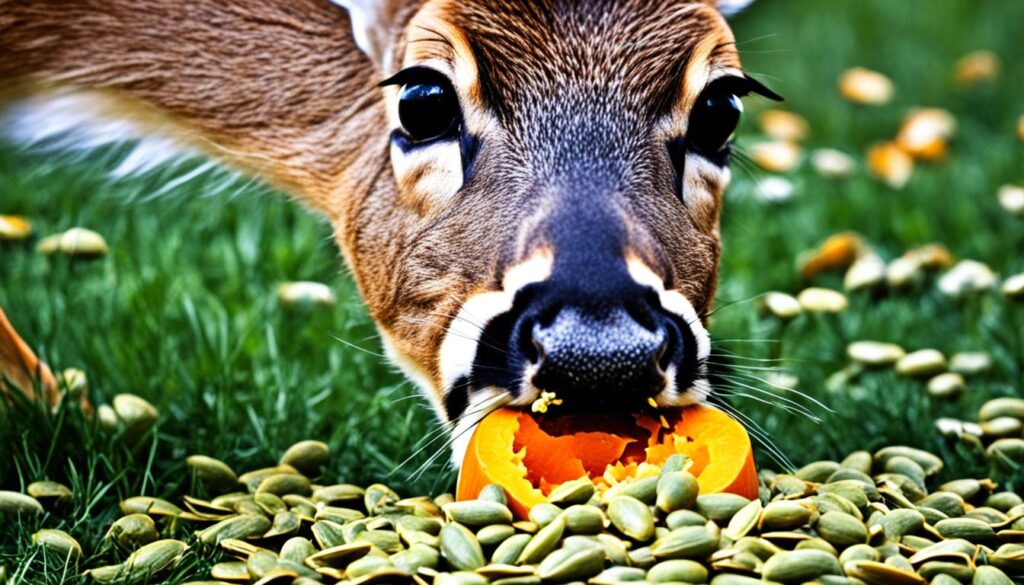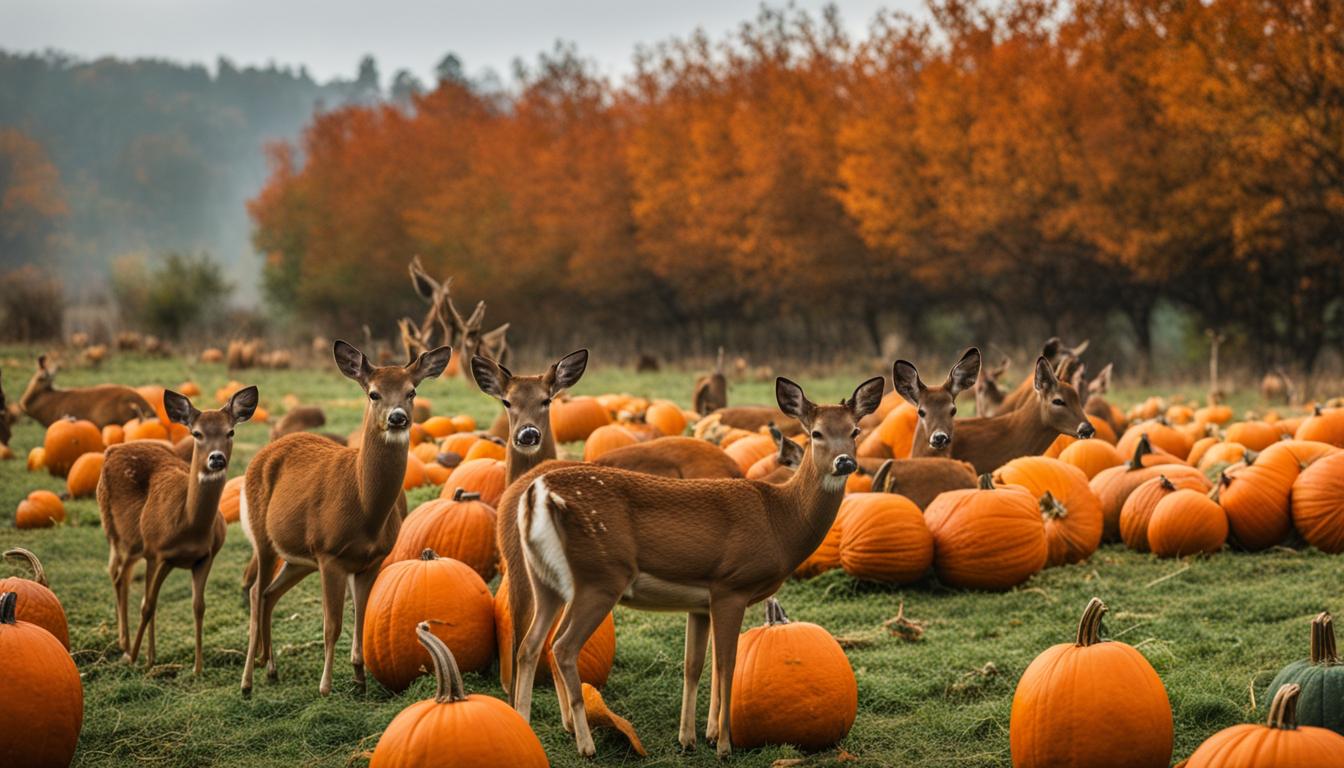Deer are fascinating creatures with diverse feeding habits. While they are primarily browsers, relying on a wide array of food sources, it may come as a surprise that they do enjoy pumpkins as part of their diet.
Deer have been known to consume various fruits and vegetables, including apples, grapes, plums, cherries, carrots, snap peas, and yes, pumpkins. Their diet also includes acorns, other mast, certain trees, and plants like pears, persimmons, and maple.
However, it’s important to note that pumpkin consumption is not their top preference. Deer will eat pumpkins if they are hungry enough, particularly enjoying the soft portion of pumpkin rinds, the seeds, and the inner flesh.
Feeding deer, including pumpkins, may increase the transmission of diseases like chronic wasting disease and is illegal in certain jurisdictions. To support local deer populations in a safe and effective manner, planting food plots can be a better alternative.
Content Highlights
ToggleKey Takeaways:
- Deer are primarily browsers with a wide variety of food sources.
- Pumpkins are part of their diet, but not their top preference.
- Feeding deer, including pumpkins, can pose risks and may be illegal.
- Planting food plots is a safer way to support local deer populations.
Why do Deer Eat Pumpkins? Exploring Dietary Preferences
Deer may eat pumpkins for several reasons. During the fall, when food sources become scarce, pumpkins provide a source of nutrients and energy that can help deer survive the winter.
Pumpkins are high in potassium, fatty acids, and vitamins A and E, which contribute to their nutritional value for deer. While deer primarily consume plant material, pumpkins offer an additional food source that is readily available in many areas.
The soft portion of pumpkin rinds, seeds, and inner flesh are palatable to deer, especially during the fall season. However, it’s important to note that pumpkins are not their top food preference, as deer have a varied diet that includes a wide range of fruits, vegetables, and plant material.
Next, we’ll explore some strategies to prevent deer from damaging your pumpkins.

Preventing Deer Damage to Pumpkins - Tips and Strategies
If you want to protect your pumpkins from deer and deter them from eating your prized harvest, there are several effective methods you can try. One popular option is to enclose your property with a sturdy fence that is tall enough to discourage deer from attempting to jump over. Alternatively, you can consider using mesh netting or strategically planted hedge shrubs as natural barriers to keep the pesky deer at bay.
Another deterrent method is to use automated sprinklers that spray water when motion is detected or install porch lights that produce sudden sounds to startle and scare away deer. These unexpected stimuli can be highly effective in deterring deer from approaching your pumpkins and wreaking havoc on your hard work.
Deer-deterrent sprays are another useful tool in protecting your pumpkins. These sprays can make your pumpkins unappealing to deer by creating an unpleasant taste or odor that deer find repulsive. Furthermore, hanging soap bars or scattering soap shavings around your pumpkins can emit a fragrance that interferes with a deer’s keen sense of smell, effectively deterring them from getting close.
For a more DIY approach, you can make your own deer-repellent using household ingredients. Mixing chili pepper, rotten eggs, garlic oil, vinegar, or eucalyptus oil in a spray bottle and generously applying it to your pumpkins can serve as a potent deterrent. Additionally, placing pet fur or human hair clippings near your pumpkins can mimic the scent of natural predators, dissuading deer from venturing too close.
While these methods can be helpful in protecting your pumpkins from deer, it’s important to note that they are not foolproof. Persistent or hungry deer may still find ways to access your pumpkins despite your best efforts. Regular vigilance and considering multiple strategies may be necessary to successfully safeguard your crop.
- California Deer Hunting Guide: Seasons, Rules, Permits, and More - 26 June 2024
- Arkansas Deer Season 2024 [Schedules, Licenses, Bag Limits & More!] - 26 June 2024
- 2024 Arizona Deer Season New Dates & Rules! - 25 June 2024




